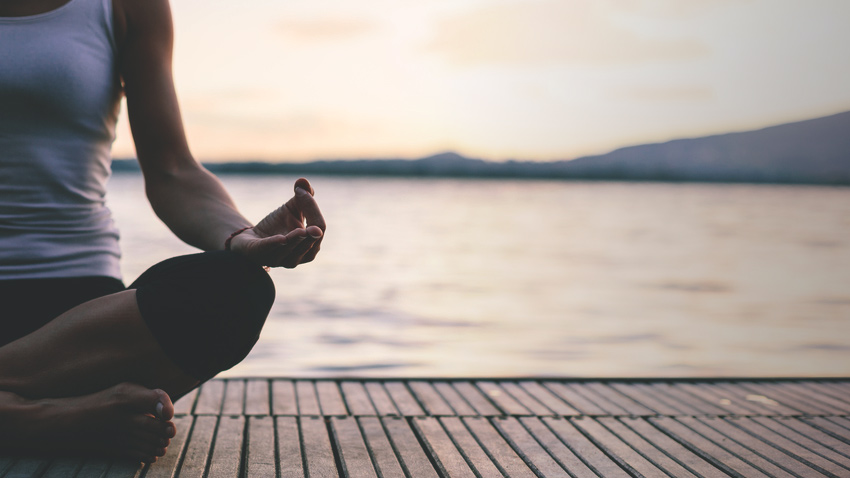Transform Your State Of Mind with Easy Steps on How to Meditate?
Transform Your State Of Mind with Easy Steps on How to Meditate?
Blog Article
Just How to Meditate: A Detailed Approach to Achieving Mindfulness and Tranquility
Reflection serves as an effective tool for achieving mindfulness and psychological calm in a busy globe. By understanding the essential concepts and techniques included in meditation, people can cultivate a technique that improves their general well-being.
Recognizing Meditation
Comprehending reflection involves realizing its basic principles and methods, which work as the foundation for the method. At its core, meditation is a mental exercise intended at promoting leisure, building inner power, and developing concern and insight. The technique motivates people to focus their focus, typically through strategies such as deep breathing, visualization, or rule rep.
Reflection can be classified right into various designs, including mindfulness, transcendental, and loving-kindness meditation, each with unique purposes and approaches. Mindfulness reflection emphasizes present-moment awareness and non-judgmental observation of sensations and ideas, while transcendental reflection entails making use of particular rules to transcend normal thought processes. Loving-kindness meditation concentrates on developing a mindset of love and compassion towards oneself and others.
No matter the technique used, the key goal stays regular: to grow a much deeper understanding of the mind and its patterns. This self-awareness fosters psychological strength, quality of idea, and a profound sense of tranquility (How to meditate?). By comprehending these techniques and concepts, individuals prepared for an effective reflection practice that can substantially boost their general health
Planning For Your Technique
Before starting your meditation technique, it is crucial to develop a setting favorable to concentrate and leisure. Make sure that the area is clean and totally free of clutter, as a clean environment can aid get rid of the mind.
Consider the lights, as natural light can enhance your mood and energy. Soft, warm lights is typically extra relaxing than rough fluorescent lights. Furthermore, pick a comfy temperature, making sure that you are neither too warm nor also cool.
Integrating components that promote tranquility can further boost your experience. This may consist of soft pillows or coverings for convenience, along with soothing aromas from important oils or scent. It can likewise be advantageous to have actually a timer set for your meditation session to protect against interruptions from clock-watching.
Fundamental Meditation Techniques

An additional efficient method is body scan reflection. This entails emotionally scanning your body from head to toe, discovering any kind of locations of tension or discomfort and consciously relaxing those muscle mass. This technique fosters a deeper link between your mind and body.

Last but not least, loving-kindness meditation concentrates on growing concern in the direction of on your own and others. Quietly repeat phrases of a good reputation, boosting psychological well-being and interconnectedness. Each of these methods acts as a foundation for your reflection trip, permitting you to discover the approach that resonates ideal with your personal method.
Keeping Emphasis and Mindfulness

Establishing a committed meditation room can boost the ability to preserve mindfulness. A quiet, uncluttered atmosphere reduces disturbances, enabling deeper immersion in the practice. In addition, setting a time limit can help handle assumptions; starting with much shorter sessions may relieve the change right into longer practices.
Making use of techniques such as body scanning or observing feelings can likewise bolster mindfulness. These approaches encourage practitioners to remain existing and engaged with their physicality, anchoring their attention in the minute. Regular technique is essential; the brain develops strength over time, developing a more powerful capacity for focus.
Incorporating Reflection Into Day-to-day Live
Integrating meditation into day-to-day live can change routine tasks into chances for mindfulness and self-reflection. By integrating mindfulness methods into typical tasks, people can grow a better sense of visibility and serenity amidst the busyness of day-to-day life.
Begin by identifying minutes throughout your day where you can stop and exercise mindfulness. Throughout your morning commute, focus on your breath or the experiences of the setting around you. In the kitchen, approach cooking as a meditative practice, appreciating the appearances, shades, and scents of the ingredients. Even mundane activities like washing meals or walking can become possibilities for meditation by directing your interest to the sensations of motion and the noises surrounding you.
Additionally, alloting dedicated times for reflection can enhance its technique. Beginning with brief sessions, progressively increasing duration as you come to be much more comfy. Use suggestions or cues-- like a details time of day or a relaxing sound-- to develop consistency.
Inevitably, the objective is to weave mindfulness into the textile of daily life, allowing you to approach each moment with intention, therefore enhancing your general sense of well-being and clearness.
Final Thought
In conclusion, effective reflection calls for a peaceful setting, a comfy position, and an emphasis on the breath. By enabling ideas to develop without judgment and consistently rerouting interest to the Resources breath, professionals can accomplish boosted mindfulness and tranquility. Incorporating different strategies, such as body scanning and loving-kindness expressions, can further enhance the method. Normal reflection, even in short sessions, promotes a much deeper link to the here and now moment, eventually resulting in better tranquility and psychological quality in everyday life.
Reflection can be categorized into various designs, consisting of mindfulness, transcendental, and loving-kindness meditation, each with distinct purposes and techniques. Mindfulness meditation emphasizes present-moment recognition and non-judgmental observation of feelings and thoughts, while transcendental reflection entails the usage of details rules to transcend average idea procedures.With your meditation area prepared, it's time to check out various standard reflection techniques that can help blog here cultivate mindfulness and inner peace.Continually maintaining emphasis and mindfulness throughout reflection can be challenging, particularly for those new to the technique.Establishing a specialized reflection area can boost the ability to maintain mindfulness.
Report this page